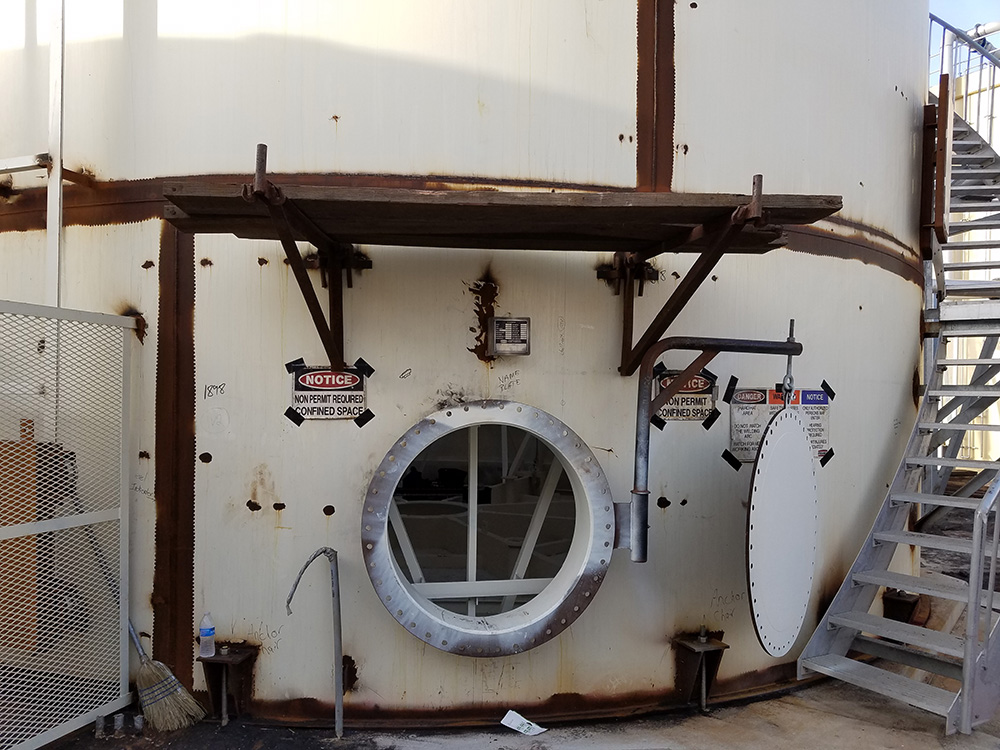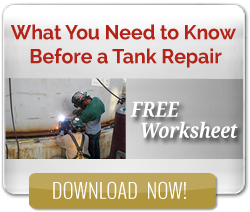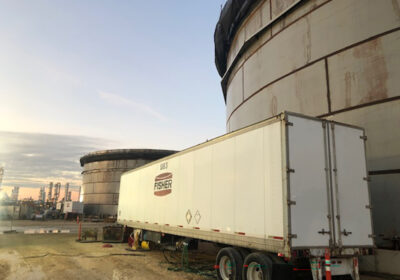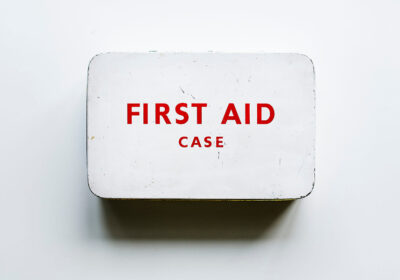DON’T TOUCH THAT STORAGE TANK – YOU DON’T KNOW WHERE IT’S BEEN!

As everyone in the tank industry starts considering OSHA’s new Confined Space rules, we’re looking back at a post that covers some basic do’s and don’ts of safe tank entry and work. Here’s Charles Hineman, our Safety Director at Fisher Tank Company, discussing storage tank repair work and asking some questions that might just save a life.
Before entering or working on a field erected tank, even the most seasoned tank expert must stop and ask some important question, inlcuding “what was in the tank?” his is just one of many questions that must be asked prior to performing repair work on above ground storage tanks. The safety and health of your employees depends on questions such as this being asked. Is our industry asking all the proper questions? Based on recent data, as an industry, we are not.
One major problem facing the world of tank repair is a lack of hazard recognition. You won’t have to go far to find a number of recent fatalities attributed to repair work on above ground storage tanks. The Chemical Safety Board (CSB) alone informs us that there have been over 60 fatalities since 1990 due to explosions and fires from hot work activities on tanks. NIOSH reports160 fatalities associated with confined space entry since 1982.
How do we fix the problem?
We cannot rely solely on the OSHA standards to provide a failsafe and hazard free work environment. Education and comprehensive safety procedures, utilizing experience and industry best practices, are vital to ensuring the health and safety of our employees. Organizations such as the America Petroleum Institute (API), Chemical Safety Board (CSB), National Fire Protection Agency (NFPA), and the Steel Tank Institute (STI) can offer educational seminars and guidelines to help develop effective safety programs for tank repair.
A simple but effective tool that can be added to your tank repair work safety program is a check list. This will ensure that all the proper questions are being asked and hazards are being identified prior to beginning work. Here are just a elementary questions to ask that should generate additional safety considerations when developing your own checklist:
What was in the tank?
An MSDS sheet has to be provided to your employees. 80% of all confined space fatalities are a result of a hazardous atmosphere. Employees need to be aware of the hazards and health effects associated with the particular chemical(s) the tank contained.
Are rescue services available in case of an emergency?
What resources are available, and is the entire team aware of who and when to call for support? What access is there for rescue personnel?
What’s around the tank?
Be certain hazards are identified surrounding your work area. Are there any vents, sewers, pits, open end pipes, electrical hazards, etc., that could become an issue?
Is the Tank properly isolated?
Lock out/ Tag out procedures are critical concerns in repair work. Is simply locking and tagging out a valve sufficient? The tank may have to be physically isolated depending on the product.
Do we have proper ventilation?
API recommends 5 air changes per hour to ensure proper ventilation.
Is there lead in the paint?
Over exposure to lead can negatively affect every organ in the human body. Make sure you have a laboratory analysis to determine if there is lead present. Do not rely on a “lead swab stick” – they have a threshold of detection around 500ppm. Any detectable amount of lead triggers the OSHA requirements.
What does the inspection report tell us about the integrity of the tank?
The tank inspection report can provide useful information such as whether the roof is safe to walk on, or if holes are in the bottom of the tank, indicating there could be potentiall hazardous product under the floor.
Is the tank gas free and ready for hot work?
Be sure to check all column legs, pontoons, floors, sumps, pipes, repads, guide poles and ladders, roof drains, etc. prior to beginning hot work. Remember, since 1990, 60 deaths have been directly attributed to hot work on tanks.
Is the floating roof secure?
A form of anti-rotation needs to be present and in good condition. Make sure all legs have landed properly and remain vertical. As an additional safeguard, install roof supports on the shell or add cribbing in case of roof failure.
Safety programs and procedures need to be living documents, constantly being evaluated and updated to represent changing regulations and industry best practices. CSB’s web page offers some excellent videos concerning recent incidents surrounding tank repair. Hopefully you will think twice about the hazards concerning your next tank repair project, and ask more than just “What was in the tank?”.
Getting clear, definitive answers to the questions above is a key part of ensuring that tank repair projects are safe for everyone involved.
For more information about preparing for tank repair projects, download our free tank repair project planning worksheet!
Click here to read more of our blogs





